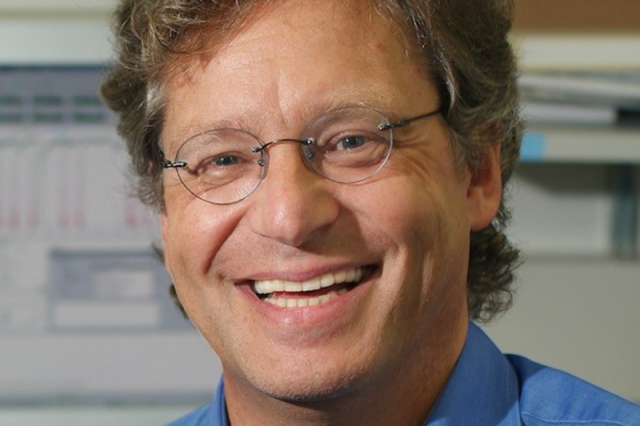This year Nobel Prize in Chemistry has been given to the power of directed evolution mainly applied to enzymes and phage display. In this interview, we discuss about this technology with Prof. Dr. Andreas Plückthun, who has been working for many years on protein engineering and developed very useful systems such as ribosome display and the Designed Ankyrin Repeat Protein (DAPRin) technology.
2018 Chemistry Nobel Prize has been awarded to the power of evolution to develop new proteins that solve mankind’s chemical problems. What do you think is the impact of this area of research?
It clearly has entered the mainstream of academic and industrial research. Some conceptual experiments were done in the 1980’s by several groups, but with inadequate technology. By the early 1990’s, molecular biology had progressed to the point that random mutagenesis, screening and display worked well enough to become useful. Nonetheless, the committee took more than 25 years to observe whether this field has any impact! This is actually very reminiscent of the Nobel prize in 2013 for molecular simulations, where the key concepts had also been developed more than 25 years earlier, and one needed to wait to see how useful this will turn out. This is, of course, also mainstream today, and both approaches are now often combined.
The future is very obvious: neither directed evolution nor molecular design alone can at present really solve the most ambitious goals of creating de novo functional molecules that could rival nature (except some rather simple cases). So, we need to combine both approaches and still greatly improve all these technologies.
Do you think that we should look and copy more often nature since they have been selecting for thousands of years?
This is always a good starting point. But, as a protein engineer, I like to always work from the back to the front: what exactly do we want a molecule to do at the very end? What are its constraints? And then one can ask what starting material might be available, and then we have to think about how get from start to finish. In other words, we have to plan what should be done by design, and what by evolution. In most our recent projects, there are protein pieces from nature and pieces that are completely man-made.
Which are the main differences between phage display and the ribosomal display developed in your laboratory? Any cases in which one is better than the other?
Phage display was invented by George Smith, in a Science paper written all by himself, in 1985. This was the first demonstration of “displaying” a peptide or protein outside of a cell, and connecting it with its own DNA on the inside of the phage. After we had published in Science how to make functional antibody fragments in E. coli, Greg Winter then combined this very elegantly to display them on the surface of phage, as molecules are using the same secretion pathway when being displayed on phage. This then opened the field to antibody libraries, with of course enormous economic consequences. Antibody fragments are very suitable for phage display, because of their disulfide bonds, which are formed during secretion. Both Greg and I founded each a company that commercialized antibody phage display, and both are doing very well.
Phage display is a robust technology, but the library is “constant”. Ribosome display is a radical departure, by making the protein completely in vitro, by stalled ribosomes that remain connected to the mRNA and to the protein, which is not released. There are two key differences to phage display: the first is that no cells are involved, so the library can be much bigger, and the second most important one is that one can directly combine this with error-prone PCR, thereby letting the protein library “evolve”. When we first did this in the mid-nineties, we were rather surprised to find that so many of our selected antibodies had mutations. Later we then figured out how to make use of this feature to improve properties, or suppress mutations of they are not wanted.
So, ribosome display really comes close to a true “protein evolution in vitro”. This is now commercially used by the second company I helped to found.
Which do you think are the limitations in the directed evolution technologies such as phage and ribosomal display?
No matter how well this display is done, the amount of sequence space covered is still tiny, compared to all conceivable variations. Even though these libraries can exceed 10^12 in complexity, this is a drop in the ocean of all conceivable sequences. Even considering the power of “real” evolution, as it happens in ribosome display, the redundancy of the genetic code, which keeps us from extinction, makes it essentially impossible to mutate every amino acid to all 19 other amino acids in a real experiment.
Therefore, even in these experiments one has to use some careful planning, e.g. place random codons where changes might be more beneficial. Another limitation is that it is not always easy how exactly to select for the desired properties. I therefore suspect that molecular design and selections will grow closer and closer together.
These evolution technologies allows to solve several problems such as finding new proteins with higher affinity, more selectivity, higher stability, etc. Are these technologies widely used for companies as well?
Absolutely! There are many companies using phage display, and a number of therapeutic antibodies on the market have come from this approach. Similarly, clinical products have come from ribosome display, and I expect the first FDA approval in 1-2 years. Also, Frances Arnold’s method of randomly mutating enzymes and screening for improved properties, say new substrates or higher thermostability, is now mainstream in the chemical industry. The enormous number of genomes that have been sequenced gives the field many new starting points.
 Prof. Dr. Andreas Plückthun is a Full Professor of Biochemistry at the University of Zurich since 1993. Some of his research achievements include fundamental contributions enabling the emergence of antibody engineering, notably by the use of E.Coli as an engineering platform, studies on synthetic antibodies which led to the first fully synthetic antibody library, the development of ribosome display, and the development of the Designed Ankyrin Repeat Protein (DARPin) technology.
Prof. Dr. Andreas Plückthun is a Full Professor of Biochemistry at the University of Zurich since 1993. Some of his research achievements include fundamental contributions enabling the emergence of antibody engineering, notably by the use of E.Coli as an engineering platform, studies on synthetic antibodies which led to the first fully synthetic antibody library, the development of ribosome display, and the development of the Designed Ankyrin Repeat Protein (DARPin) technology.


Leave a comment
The editors reserve the right not to publish comments or to abridge them.